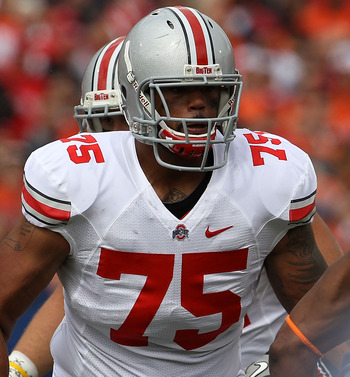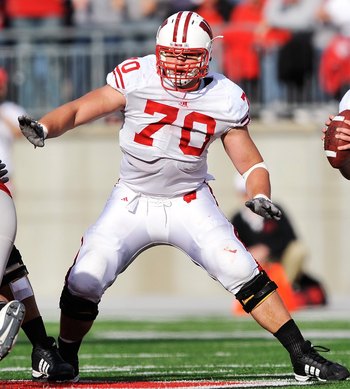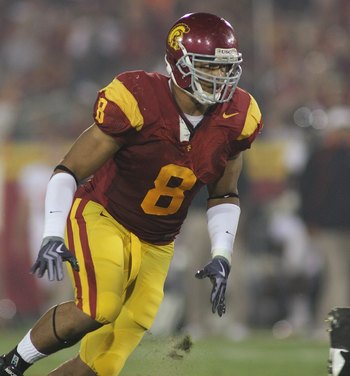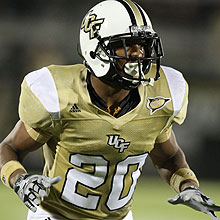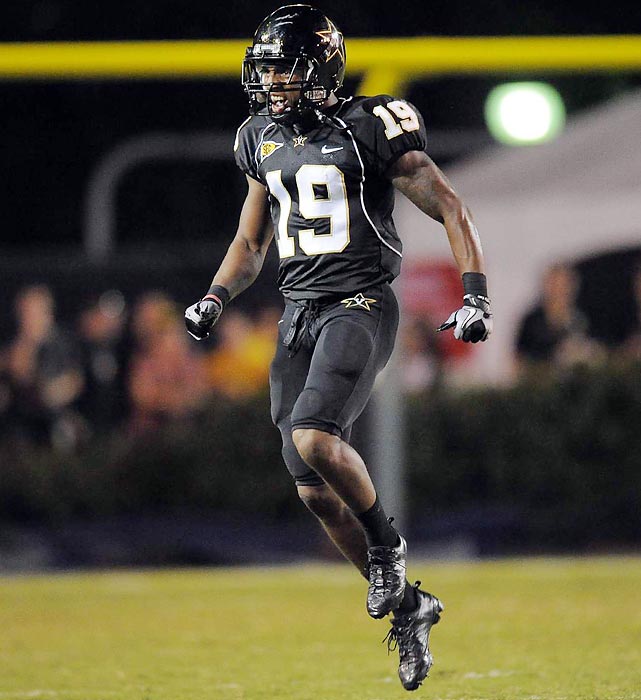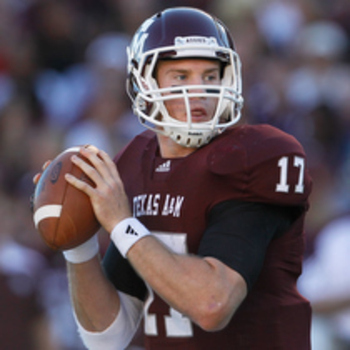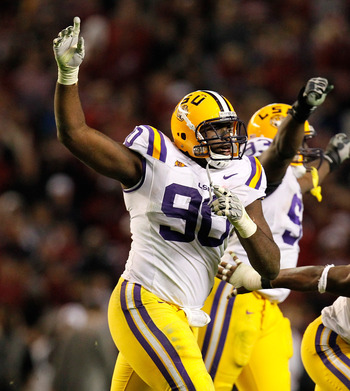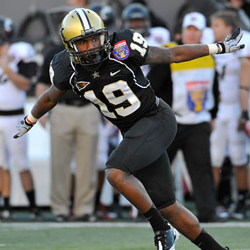This is our penultimate mock draft. Next week’s update will be our last, and the one I enter into the Huddle Report before the inevitable 93rd placed ranking. I’ve made some changes in the first and second round.
A few team’s still give me headaches. What are the Jaguars going to do and more specifically, who is making their pick? With a lack of elite, top end offensive tackles beyond Matt Kalil, what are teams like Buffalo and Arizona going to do? Reach for need, move down the board or go for greater value at other positions?
Something about the Eagles suggests they’re primed to make a move up the board, but for whom? They can get good value at #15, but is there someone they just have to get?
Will there be a team in the 20’s that sees a prospect linger on the board beyond expectation? Will that provoke a phone-call to move up? And if that is the case, could a team like Kansas City, Seattle or Arizona benefit? That 11-15 region has been active in previous drafts. The Seahawks would probably love to get some 2013 stock. I wonder what that would be used for?
And I make no apologies for again mocking Courtney Upshaw to Seattle. The Seahawks need someone who can realistically play three downs in the same team as Red Bryant and Chris Clemons. The Seahawks need someone who can provide some extra pass rush and play hard against the run. That screams Upshaw to me. I’m not going to conform to the other billion mock drafts out there. How many had James Carpenter going in the top-25? Don’t be shocked if Upshaw isn’t even on the board at #12.
In round two I have the Seahawks taking Doug Martin, who would be a steal at any point in round two. It may seem unrealistic that he’d still be on the board, but let’s not forget Ray Rice lasted into the 50’s. Teams believe they can find running backs later, and this is a deep class. Seattle’s re-signing of Leroy Hill and addition of Barrett Ruud has taken some of the pressure off needing to get a linebacker in round two. There will be options in rounds three and four, and let’s not forget that KJ Wright is a former fourth round pick.
Updated mock draft
 |
#1 Andrew Luck (QB, Stanford) Maybe they’ll take a kicker instead? |
 |
#2 Robert Griffin III (QB, Baylor) Robert Griffin III can start looking for property in the capital. He probably already is. |
 |
#3 Matt Kalil (OT, USC) There’s some talk Kalil isn’t such a sure thing here. File this under Minnesota ‘testing the water’. They will surely draft Kalil. |
 |
#4 Trent Richardson (RB, Alabama) The Browns have to find someone to build around. Richardson is a future superstar. |
 |
#5 Morris Claiborne (CB, LSU) The biggest spenders in free agency, Tampa Bay could still use a stud cornerback. |
 |
#6 Justin Blackmon (WR, Oklahoma State) The Rams know they’re in a three-draft plan so they need to take whoever is highest on their board with this pick. |
 |
#7 Whitney Mercilus (DE, Illinois) Jacksonville don’t do things by the book. Even if Mercilus isn’t the pick here, expect a surprise. |
 |
#8 Ryan Tannehill (QB, Texas A&M) How much does Mike Sherman rate his former Texas A&M starter? We’ll find out if here’s still on the board. |
 |
#9 Fletcher Cox (DT, Mississippi State) Carolina could go in many different (defensive) directions. More than anything, they want guys who are scheme diverse. |
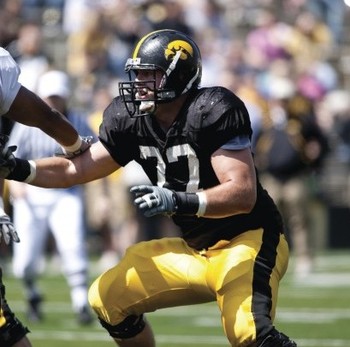 |
#10 Riley Reiff (OT, Iowa) The Bills are surely going to draft a left tackle here? Who’s the alternative blocker? |
 |
#11 Luke Kuechly (LB, Boston College) Scott Pioli loves guys like this – blue collar, high work ethic. Not always spectacular, but always solid. |
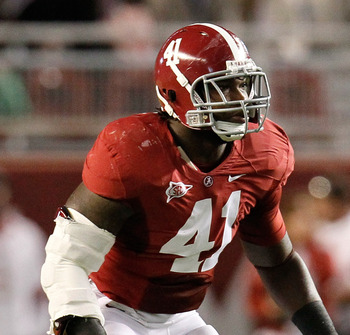 |
#12 Courtney Upshaw (DE, Alabama) Seattle needs to find a DE/OLB hybrid to fit into the defense and help the pass rush. Upshaw could go earlier than this. |
 |
#13 Melvin Ingram (DE, South Carolina) Is it a case of offensive line at any cost, or could Arizona consider a pass rusher here? |
 |
#14 Dontari Poe (DT, Memphis) One of the 3-4 teams will convince themselves they cannot live without Poe’s potential. |
 |
#15 Quinton Coples (DE, North Carolina) Philadelphia can afford to take a chance on this working out. |
 |
#16 Mark Barron (S, Alabama) The hot name a week before the draft, Barron could go in the top-15. |
 |
#17 Stephon Gilmore (CB, South Carolina) Tall, fast and athletic – the en vogue cornerback for the time. |
 |
#18 Michael Floyd (WR, Notre Dame) They have a lot of needs, but lost Vincent Jackson and this makes sense. |
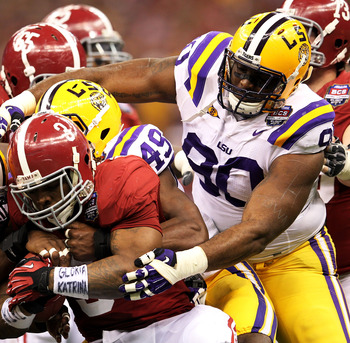 |
#19 Michael Brockers (DT, LSU) Trading for Brandon Marshall will allow Chicago to concentrate on cornerbacks and defensive lineman here. |
 |
#20 Peter Konz (OC, Wisconsin) Underrated player. Don’t be surprised if he goes earlier than expected. The best player at his position since Alex Mack. |
 |
#21 David DeCastro (OG, Stanford) A very solid player – but very solid players tend to get a little overrated. This is the range he should go. |
| #22 Cordy Glenn (OT, Georgia) He can play guard or tackle. Cleveland must know they can get a top receiver early in round two. |
|
 |
#23 Dre Kirkpatrick (CB, Alabama) Coverage skills are the issue here but eventually someone will pull the trigger on Kirkpatrick. |
 |
#24 Dont’a Hightower (LB, Alabama) This guy was made to play in the AFC North. |
 |
#25 Jerel Worthy (DT, Michigan State) I’m not a big fan but I can see why he could end up going in this range. |
 |
#26 Stephen Hill (WR, Georgia Tech) Mind-blowing potential given his size, athleticism and hands. He stood out despite limited targets in 2011. |
 |
#27 Chandler Jones (DE, Syracuse) Part of me wonders if Bill Belichick will see a guy like this as fool’s gold. Meh. We’ll run with it. |
 |
#28 Shea McClellin (DE, Boise State) Green Bay’s priority has to be finding another pass rusher. |
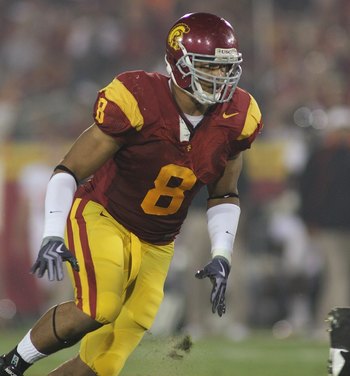 |
#29 Nick Perry (DE, USC) Baltimore are well positioned to go with the best defensive player available here. |
 |
#30 Kevin Zeitler (OG, Wisconsin) The Niners may well take a guard and Zeitler is a good one. |
| #31 Devon Still (DT, Penn State) He’s flexible enough to work his way into New England’s scheme. |
|
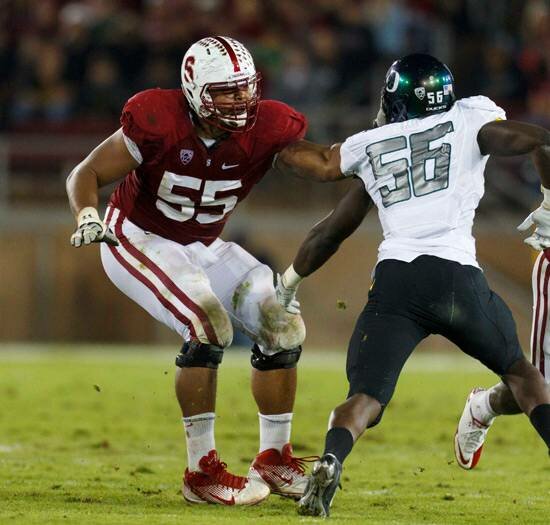 |
#32 Jonathan Martin (OT, Stanford) This would be a steal. |
Round two
#33 St. Louis – Josh Robinson (CB, UCF)
#34 Indianapolis – Coby Fleener (TE, Stanford)
#35 Minnesota – Reuben Randle (WR, LSU)
#36 Tampa Bay – Bobby Wagner (LB, Utah State)
#37 Cleveland – Kendall Wright (WR, Baylor)
#38 Jacksonville – Alshon Jeffery (WR, South Carolina)
#39 St. Louis – Alameda Ta’amu (DT, Washington)
#40 Carolina – Andre Branch (DE, Clemson)
#41 Buffalo – Zach Brown (LB, North Carolina)
#42 Miami – Mike Adams (OT, Ohio State)
#43 Seattle – Doug Martin (RB, Boise State)
#44 Kansas City – Kelechi Osemele (OG, Iowa State)
#45 Dallas – Jared Crick (DE, Nebraska)
#46 Philadelphia – Brandon Weeden (QB, Oklahoma State)
#47 New York Jets – Vinny Curry (DE, Marshall)
#48 New England – Bobby Massie (OT, Ole Miss)
#49 San Diego – Ronnell Lewis (OLB, Oklahoma)
#50 Chicago – Jayron Hosley (CB, Virginia Tech)
#51 Philadelphia – Lavonte David (LB, Nebraska)
#52 Tennessee – Kendall Reyes (DT, Connecticut)
#53 Cincinnati – Mohamed Sanu (WR, Rutgers)
#54 Detroit – Mychal Kendricks (LB, California)
#55 Atlanta – Casey Heyward (CB, Vanderbilt)
#56 Pittsburgh – Amini Silatolu (OG, Midwestern State)
#57 Denver – Lamar Miller (RB, Miami)
#58 Houston – Brandon Thompson (DT, Clemson)
#59 New Orleans – VOID
#60 Green Bay – David Wilson (RB, Virginia Tech)
#61 Baltimore – Harrison Smith (S, Notre Dame)
#62 San Francisco – Brandon Boykin (CB, Georgia)
#63 New York Giants – Dwayne Allen (TE, Clemson)
#64 New England – Keyshawn Martin (WR, Michigan State)





